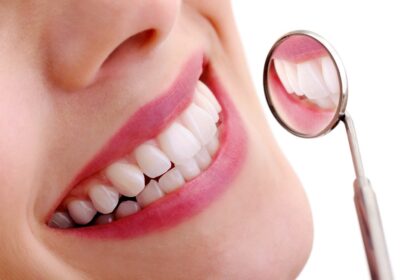
The Impact of Smoking on Oral Health
Smoking is a habit that not only affects the lungs but also wreaks havoc on oral health. The detrimental effects of smoking on various organs and systems in the body are well-documented, but its impact on oral health is often underestimated. From discoloration of teeth to severe gum disease and potentially fatal oral cancers, the consequences of smoking on the mouth are profound and wide-ranging.
Understanding the Basics: How Smoking Affects Oral Health
1. Discoloration and Staining
One of the most visible effects of smoking on oral health is the discoloration and staining of teeth. The tar and nicotine present in cigarettes and other tobacco products can quickly turn teeth from pearly white to a yellowish hue. This staining not only affects the appearance of teeth but can also be difficult to remove with regular brushing alone. Over time, the stains may become more pronounced, leading to a significant cosmetic concern for many smokers.
2. Gum Disease (Periodontal Disease)
Smoking weakens the immune system and compromises the body’s ability to fight infections, including those in the gums. This makes smokers more susceptible to gum disease, also known as periodontal disease. Gum disease starts with inflammation and can progress to the destruction of the tissues supporting the teeth. Symptoms include swollen and bleeding gums, persistent bad breath, and in severe cases, tooth loss. Smoking exacerbates these symptoms and can accelerate the progression of gum disease, even in otherwise healthy individuals.
3. Delayed Healing
Smoking slows down the body’s ability to heal itself, including in the mouth. This means that oral wounds, such as after oral surgery or tooth extraction, may take longer to heal in smokers compared to non-smokers. Slower healing increases the risk of complications such as infections and dry socket (a painful condition where the blood clot is disrupted after tooth extraction).
4. Oral Cancer
Perhaps the most serious consequence of smoking on oral health is the increased risk of oral cancer. Cancers of the mouth, lips, tongue, and throat are more prevalent among smokers than non-smokers. The chemicals in tobacco products, especially when combined with heavy alcohol consumption, significantly raise the likelihood of developing these life-threatening conditions. Early detection through regular dental check-ups is crucial for improving treatment outcomes and survival rates.
The Chemical Culprits: What’s in Tobacco?
1. Nicotine
Nicotine is a highly addictive substance found in tobacco products. It narrows blood vessels and reduces blood flow, compromising the delivery of essential nutrients and oxygen to the gums and other tissues in the mouth. This impairs the healing process and contributes to the development of gum disease.
2. Tar
Tar is a sticky substance that stains teeth and contributes to the buildup of plaque and tartar on teeth. It also contains numerous harmful chemicals that can damage tooth enamel and irritate gum tissue, further promoting gum disease.
3. Carbon Monoxide
Carbon monoxide is a toxic gas present in cigarette smoke. It displaces oxygen in the bloodstream, reducing the amount of oxygen available to cells throughout the body, including those in the mouth. This interferes with normal cell function and can impair the immune response in the gums, making smokers more susceptible to infections and diseases.
Tips for Smokers: Mitigating the Damage
1. Quit Smoking
The most effective way to protect oral health from the damaging effects of smoking is to quit tobacco use altogether. While quitting can be challenging, the benefits to oral health (and overall health) are substantial and immediate. Dental professionals can provide resources and support to help smokers kick the habit.
2. Maintain Good Oral Hygiene
Regular brushing (at least twice a day) and flossing are essential for removing plaque and food particles that can contribute to tooth decay and gum disease. Smokers should consider using toothpaste and mouthwash specifically designed to combat staining and strengthen enamel.
3. Visit the Dentist Regularly
Routine dental check-ups and cleanings are crucial for monitoring oral health and catching potential problems early. An Orthodontist Houston TX can also provide professional teeth whitening treatments to help manage staining caused by smoking.
4. Healthy Lifestyle Choices
Eating a balanced diet rich in fruits, vegetables, and lean proteins supports overall oral health. Avoiding excessive alcohol consumption and practicing stress management techniques can also contribute to better oral health outcomes.
Conclusion
Smoking has a profound and detrimental impact on oral health, from cosmetic issues like tooth staining to serious conditions like gum disease and oral cancer. Understanding these risks is essential for smokers who wish to protect their oral health and overall well-being. Quitting smoking is the best course of action to reduce these risks, but maintaining good oral hygiene practices and regular dental visits are also crucial steps towards mitigating the damage caused by smoking. By taking proactive steps, smokers can improve their oral health and reduce the likelihood of developing serious complications associated with tobacco use.

















